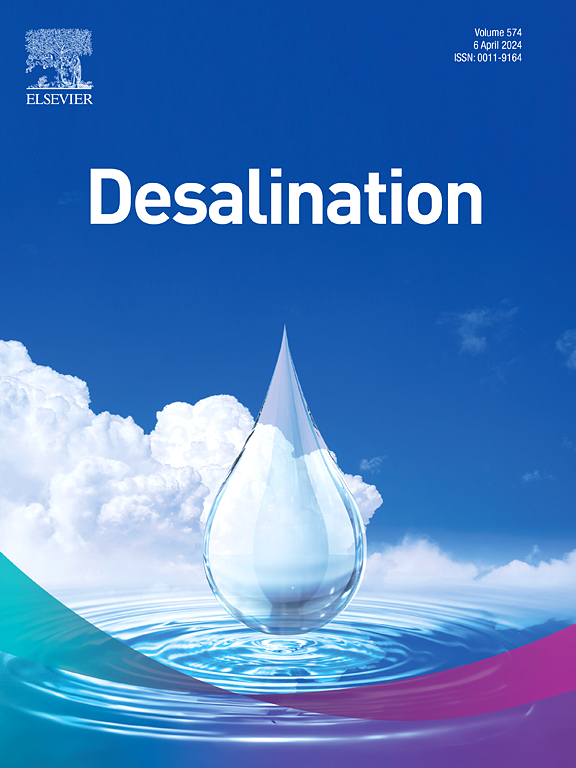Recent progress in green scale inhibitors for industrial water systems
IF 9.8
1区 工程技术
Q1 ENGINEERING, CHEMICAL
引用次数: 0
Abstract
The formation of calcium carbonate scale remains a challenge across multiple industries in potable water systems, desalination, oil production, and energy generation. While conventional chemical inhibitors are widely used, they raise environmental concerns, prompting the search for sustainable, eco-friendly alternatives. This review explores recent progress in the development of green inhibitors, focusing on natural molecules, plant extracts, and bio-based compounds that offer both scale prevention and environmental compatibility through biodegradability and low toxicity.
Experimental methods such as electrochemical analysis, physicochemical characterization, and computational modeling have been employed to evaluate inhibitor performance and understand their mechanisms. Plant extracts and bio-based compounds like polyaspartic acid derivatives have shown notable potential as biodegradable alternatives. Microbial inhibitors have also emerged as innovative tools for controlling calcium carbonate precipitation.
Synergistic combinations of different green inhibitors have demonstrated enhanced effectiveness, and novel technologies such as quantum dot-based inhibitors from agricultural waste and nanoparticle-functionalized antiscalants offer promising avenues for real-time monitoring and targeted scale inhibition. This real-time monitoring capability is attributed to the fluorescence quenching effect that occurs upon the adsorption of quantum dot-based inhibitors onto growing scale crystals.
Industrial implementation of these green solutions provides a sustainable alternative to traditional treatments, particularly in cooling systems, desalination, and oilfield applications. However, challenges remain, including performance optimization under variable conditions, long-term stability, and cost-effectiveness for large-scale use. Continued integration of experimental and computational strategies is essential for advancing the next generation of environmentally friendly scale inhibitors. With ongoing research and technological innovation, green inhibitors have the potential to significantly improve scale prevention strategies and support more sustainable industrial operations.

工业水系统绿色阻垢剂研究进展
碳酸钙垢的形成仍然是饮用水系统、海水淡化、石油生产和能源生产等多个行业面临的挑战。虽然传统的化学抑制剂被广泛使用,但它们引起了环境问题,促使人们寻找可持续的、环保的替代品。本文综述了绿色抑制剂的最新进展,重点介绍了天然分子、植物提取物和生物基化合物,这些化合物通过生物降解性和低毒性既能预防结垢又能保护环境。电化学分析、物理化学表征和计算模型等实验方法已被用于评估抑制剂的性能并了解其机制。植物提取物和生物基化合物如聚天冬氨酸衍生物已显示出显著的潜力作为可生物降解的替代品。微生物抑制剂也成为控制碳酸钙沉淀的创新工具。不同绿色抑制剂的协同组合已经证明了增强的有效性,而新技术,如基于量子点的农业废物抑制剂和纳米颗粒功能化抗垢剂,为实时监测和靶向阻垢提供了有希望的途径。这种实时监测能力归因于基于量子点的抑制剂在生长的尺度晶体上吸附时发生的荧光猝灭效应。这些绿色解决方案的工业实施为传统处理提供了可持续的替代方案,特别是在冷却系统、海水淡化和油田应用中。然而,挑战仍然存在,包括在可变条件下的性能优化、长期稳定性和大规模使用的成本效益。实验和计算策略的持续整合对于推进下一代环保型阻垢剂至关重要。随着不断的研究和技术创新,绿色抑制剂有可能显著改善防垢策略,并支持更可持续的工业运营。
本文章由计算机程序翻译,如有差异,请以英文原文为准。
求助全文
约1分钟内获得全文
求助全文
来源期刊

Desalination
工程技术-工程:化工
CiteScore
14.60
自引率
20.20%
发文量
619
审稿时长
41 days
期刊介绍:
Desalination is a scholarly journal that focuses on the field of desalination materials, processes, and associated technologies. It encompasses a wide range of disciplines and aims to publish exceptional papers in this area.
The journal invites submissions that explicitly revolve around water desalting and its applications to various sources such as seawater, groundwater, and wastewater. It particularly encourages research on diverse desalination methods including thermal, membrane, sorption, and hybrid processes.
By providing a platform for innovative studies, Desalination aims to advance the understanding and development of desalination technologies, promoting sustainable solutions for water scarcity challenges.
 求助内容:
求助内容: 应助结果提醒方式:
应助结果提醒方式:


